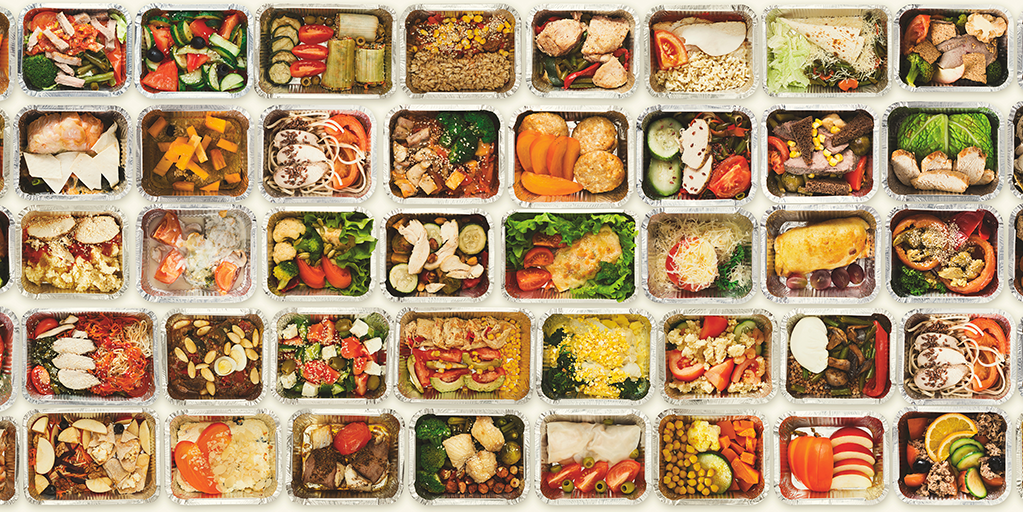How can the agricultural sector successfully incorporate sustainable, green practices? As the clock ticks on widely known climate change ‘deadlines’, the day to day realities involved in executing efficient, profitable food production continue. Regardless, the need for a huge shift in reducing industry waste is critical to addressing environmental limitations. Improving packaging throughout the supply chain means reducing single-use plastics, developing viable biodegradable and recyclable alternatives from sustainable sources, and limiting the amount of packaging materials required to safely transport produce and food products from farm to table.
Here’s a quick round-up of the recent sustainable packaging innovations and strategies:
1. Green Cell Foam
A corn-based alternative to styrofoam, Green Cell Foam is a packaging product that is increasingly spotted in use by major food distributors like Perdue Farms. The product aims to replace polystyrene (EPS), polyurethane (PU) and polyethylene (PE) in single-use packaging for thermal insulating or shock absorbing applications, and requires 70% less energy to produce than its petroleum counterparts.
Primary material: Corn starch
Disposal: Back-yard compostable, clean burning, dissolvable
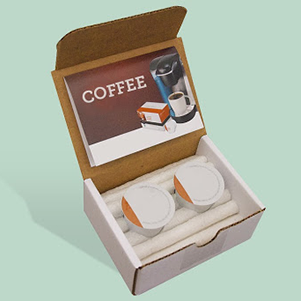
2. Temperpack’s paper option
A favourite with mealkit delivery services like HelloFresh, Temperpack has created a recyclable, paper-based packaging alternative to styrofoam. The company also offers customizable options for packaging design to accommodate across supply chain needs. This product is lightweight, sourceable, and is aligned with waste management infrastructure in the US. Being compatible with the majority of curb-side recycling programs is critical to upholding the true ‘sustainable’ nature of a packaging innovation. Though many products can technically be recycled, that does not necessarily mean municipal facilities are able to utilize the material.
Primary material: Paper
Disposal: Curbside recycling
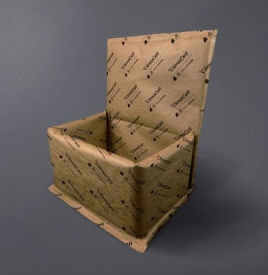
3. Mycelium grow material
Ecovative Design is creating solutions to transporting food and beyond by harnessing fungi and agricultural waste. Fully compostable, its MycoComposite product utilizes mycelium as a self-assembling, biological binder for hemp byproduct. This creates a biodegradable, flame resistant material that is quick to produce, and has been adopted by those looking to ship food products that are already contained by glass or other material. If you’re curious about MycoComposite, you can try making your own creations with an at-home kit!
Primary materials: Hemp, mycelium
Disposal: At-home compost
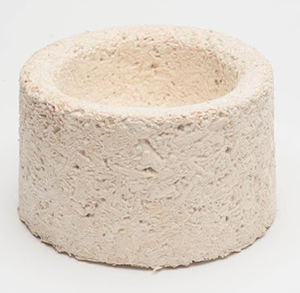
4. Xtend Iceless Packaging
Carbon emissions and wastage are huge challenges to effectively shipping fresh produce –alternative technology to ice and non-recyclable wax like Xtend Iceless improve sustainability in long haul transportation. The products are kept fresh with a unique airtight sealing design. Not only does this eliminate the need for ice, saving water, it promotes food safety by avoiding moist, bacteria-encouraging environments from developing in the produce. This method can be integrated into existing field-packing processes, which is used for produce like broccoli in the US. The major benefit to Xtend Iceless is its ability to reduce food waste during transport–however it is unclear how the packaging system can be disposed of other than by landfill.
Primary materials: Mixed
Disposal: Likely landfill
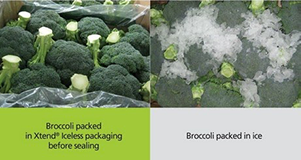
5. Loop’s refillable container system
Refillable product containers are not a new concept, but companies like Loop are taking the idea in new directions by connecting over 40 major brands to consumers with refillable, waste-free packaging options. Offering a variety of grocery and personal care products, Loop ships items in metal and glass containers, branded according to its product partner’s specificity. Consumers receive at-home delivery of fresh goods as well as pick-up return service of empties, with no need for cleaning used products. Loop’s service is currently available in some areas of the US, Paris France, with in-progress expansion in the UK, Canada, Germany, and Japan.
Primary materials: Metal and glass
Disposal: N/A –reusable containers, returned to private facility for sanitation

6. Dual use packaging: for long distance transport, retail display
Obeikan MDF’s pressed wood containers were developed with a priority on versatility in custom printed design on the material, as well as utility benefit throughout the supply chain. The package is delivered flat to the field-packing site, which is compact until constructed for use, and its prints invite retailers to use for display. Its stability invites the reuse of containers for other purposes, improving upon sustainability by encouraging repurposing beyond a single-use product.
Primary materials: Pressed wood
Disposal: Landfill, or reuse
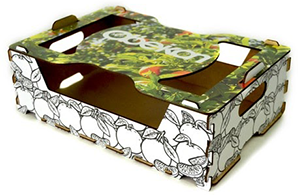
7. Melt-away options with ethylene-based polymers
Most relevant to food service usage, transparent, ethylene-based polymers can contain food safely while also dissolving in hot water. Most notable market examples for this packaging method at this time are for dishwasher or laundry pods, but European and US regulators have also approved the material for food usage. Production company MonoSol seeks to facilitate melt-away packaging for retail portions of foods like oatmeal, rice, and pasta.
Primary materials: Polyvinyl alcohol film
Disposal: Water soluble
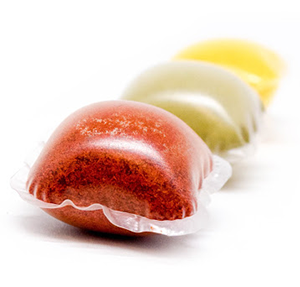
8. Milk protein based film
Announced in 2016 by the American Chemical Society, casein film has been developed for use as a food wrap. Derived from milk protein, the wrap is not only compostable, but edible as well. It serves the purpose of plastic wrap as with cheese, bread, and meat. Further development is underway to improve the material’s capacity for withstanding humid environments.
Primary material: Casein
Disposal: Compostable, edible
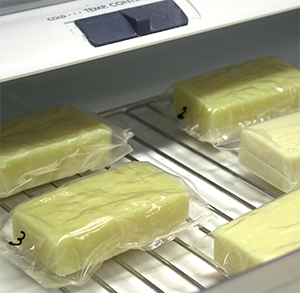
9. Improving designs with existing materials
Carlsberg’s thinner bottles are being featured at this year’s Packaging Innovations NEC, with its latest vessel used in UK markets weighing 10 grams less than the previous design. In the first six months of implementing production of the new design, Carlsberg has estimated a savings of over 63 tonnes of glass. The company is also pursuing research into a viable paper-based bottle. These initiatives demonstrate that while inventing new solutions and materials is important in pursuing greater packaging sustainability, it is also valuable to find ways to improve existing production practices.
Primary materials: Glass
Disposal: Municipal recycling
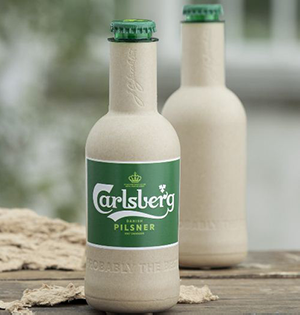
10. In development: Shrilk bioplastic
By isolating a material found in shrimp shells called chitosan, researchers at the Wyss Institute have formulated a fully biodegradable bioplastic they have named Shrilk. Shrilk combines chitosan with a silk fibroin protein to form a laminate. Though the material cannot presently be engineered to be shaped into complex 3D shapes, its nutrient-rich composting qualities pose exciting potential for future sustainable packaging.
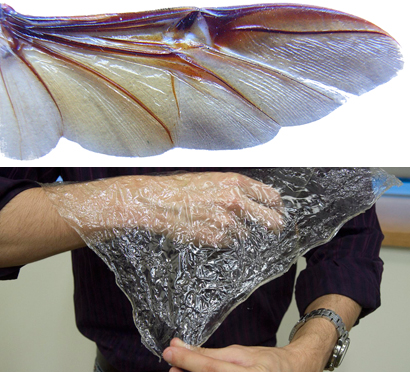
Whatever the future of packaging is going to be on your farm, the needs to balance costs, usability and the environment will always be a challenge. The need to understand where you can save time and money in packaging is essential. Tools like Croptracker’s expense and packing material inventory manager can help make the move to greener packing solutions simpler. Find out more about how Croptracker could fit into your business by requesting a demo.
Interested in learning more about Croptracker? Learn more about our Farm Management Software, or book a demonstration to schedule a meeting with our product experts.
And as always, if you're ever stuck, never hesitate to e-mail us at support@croptracker.com or Live Chat with us by clicking the green speech bubble ![]() in your bottom right-hand corner. We're always happy to help you make the most of Croptracker to make your farm more efficient, safer, and more profitable!
in your bottom right-hand corner. We're always happy to help you make the most of Croptracker to make your farm more efficient, safer, and more profitable!
